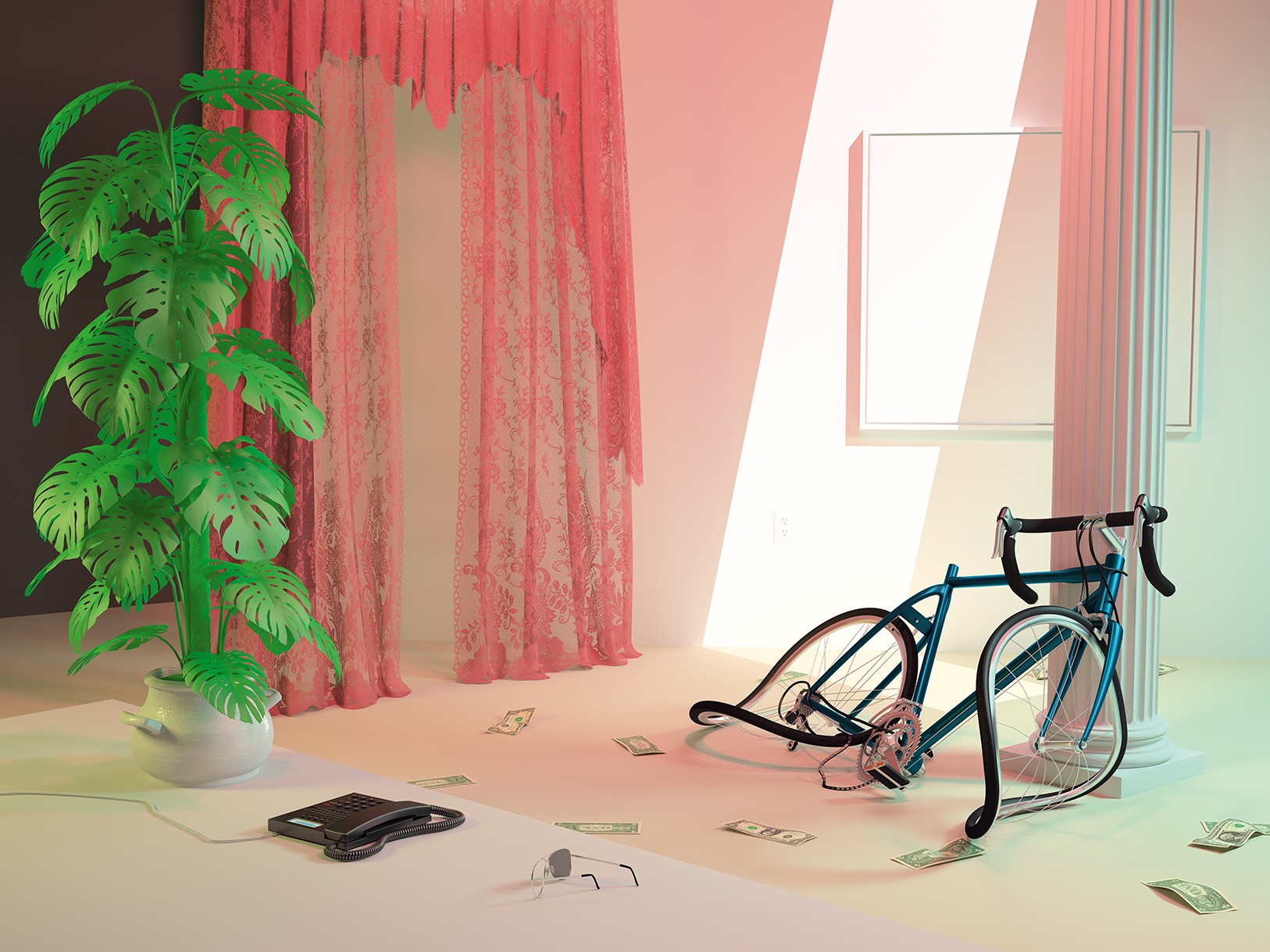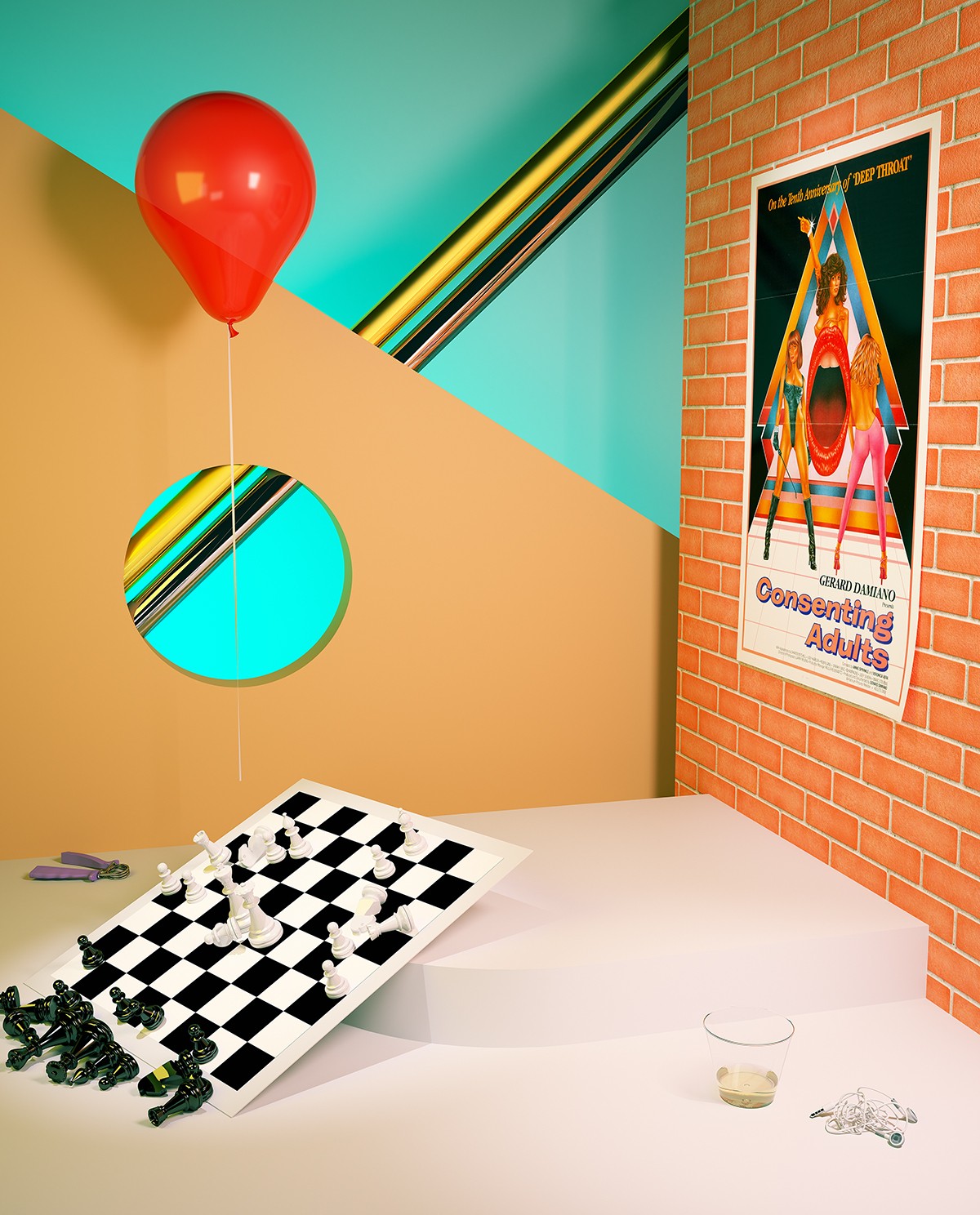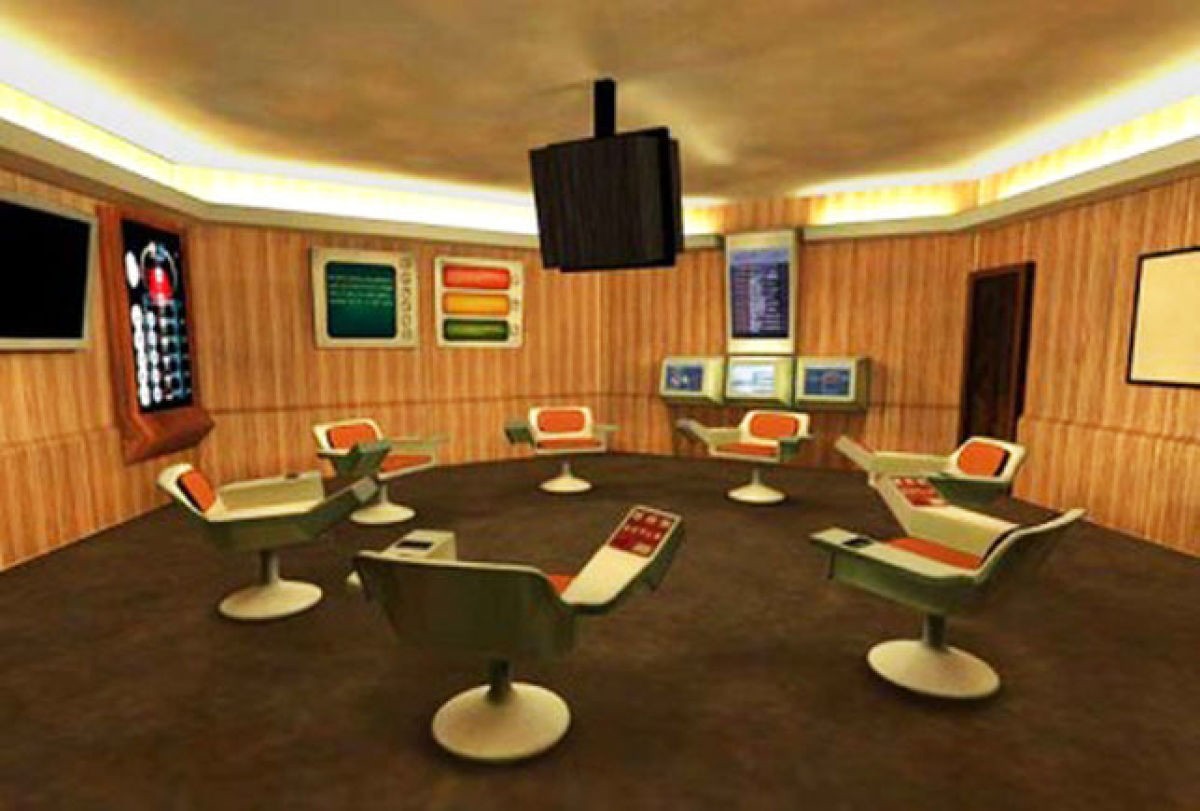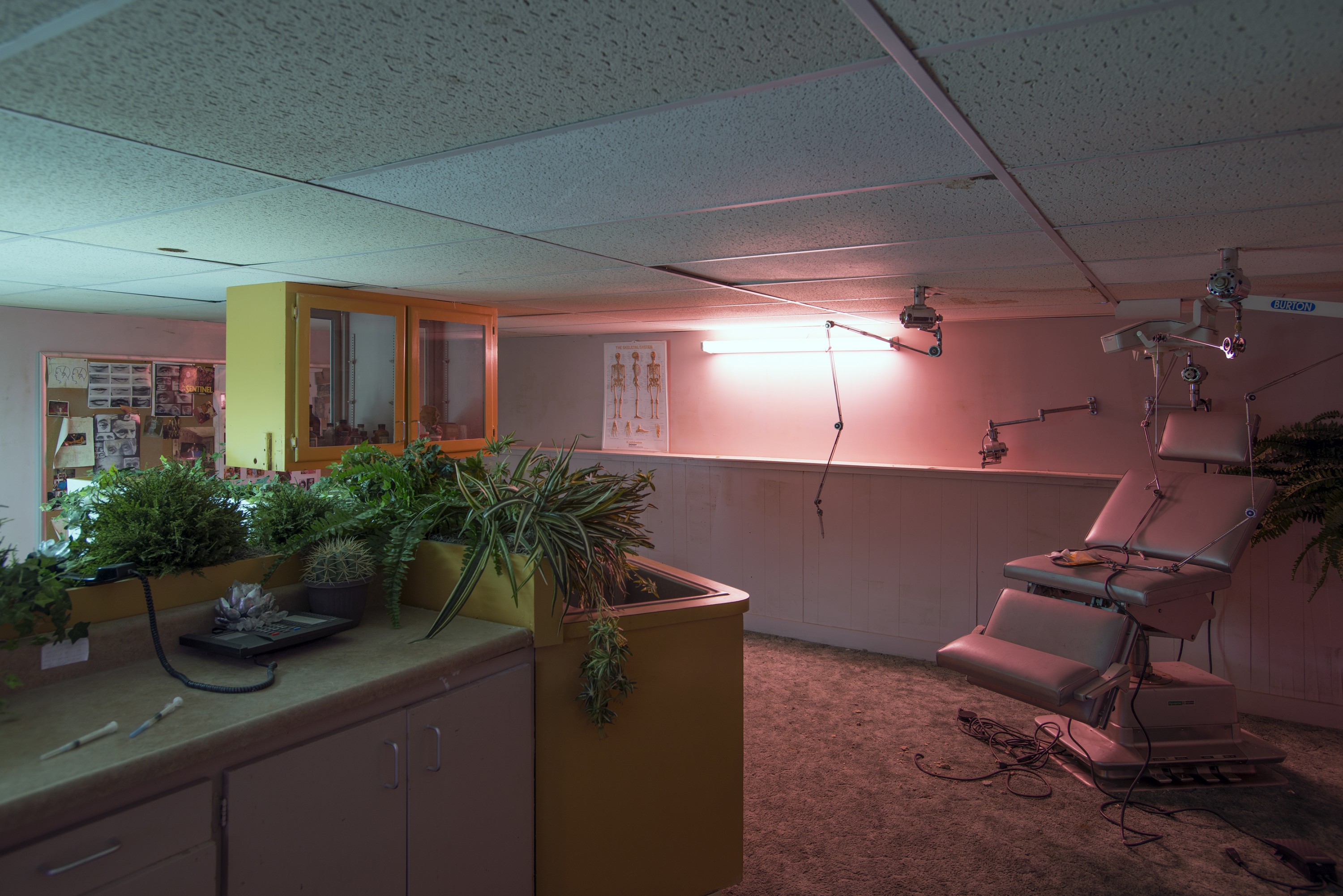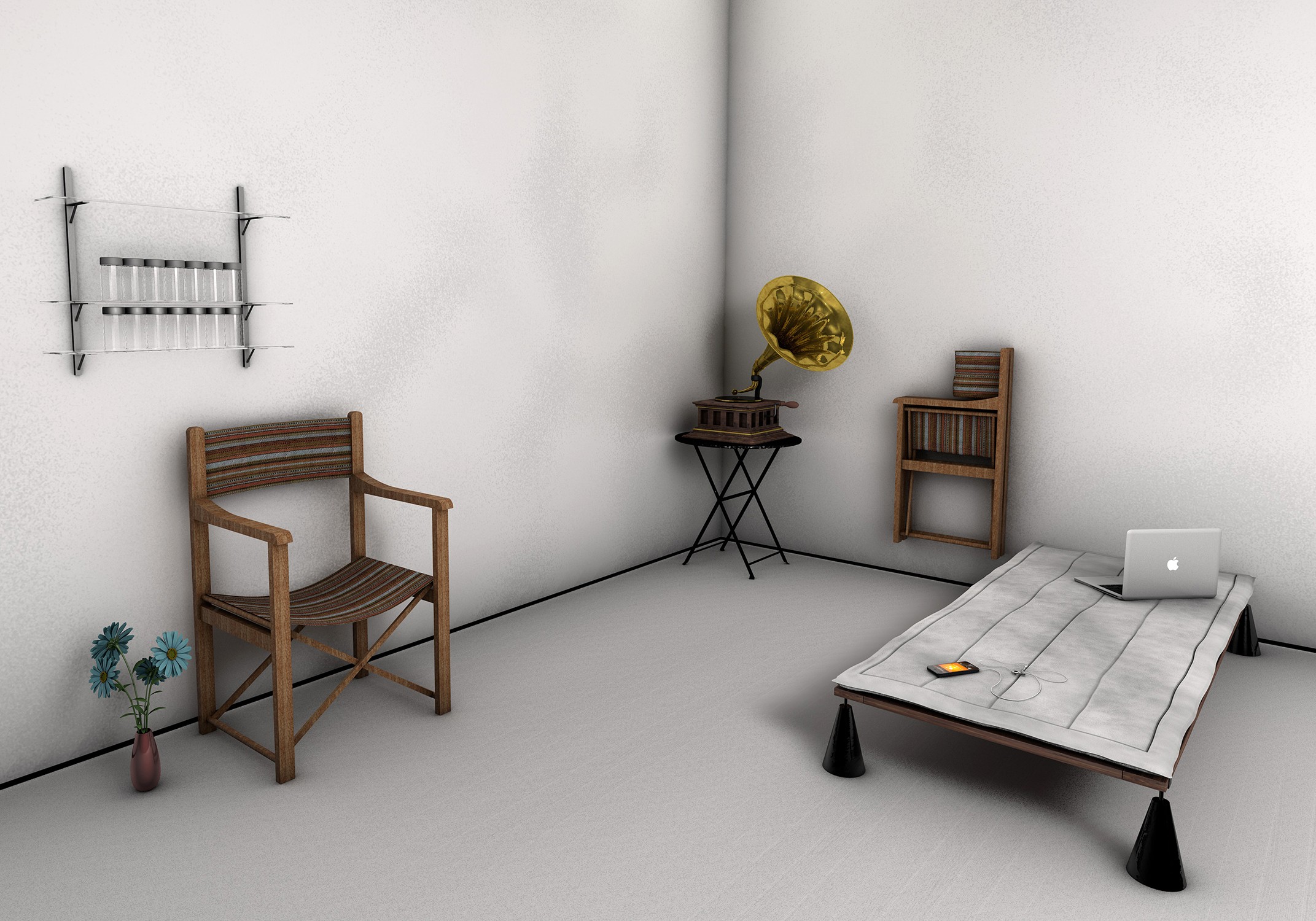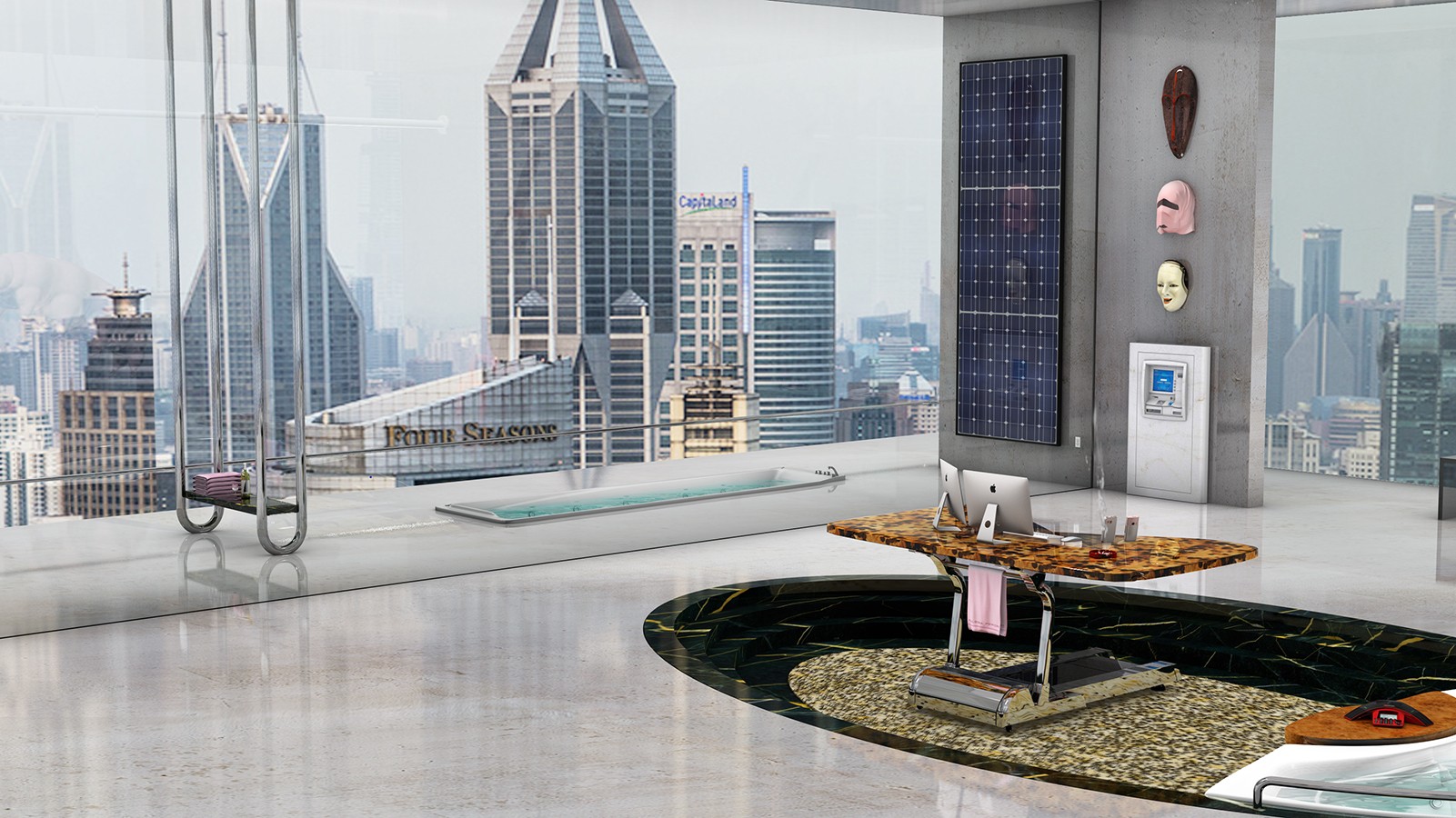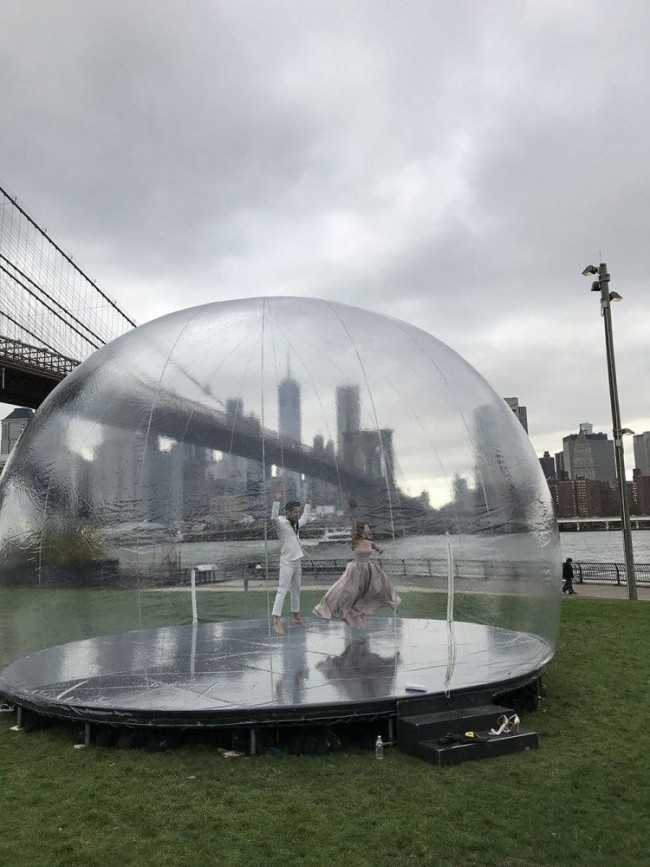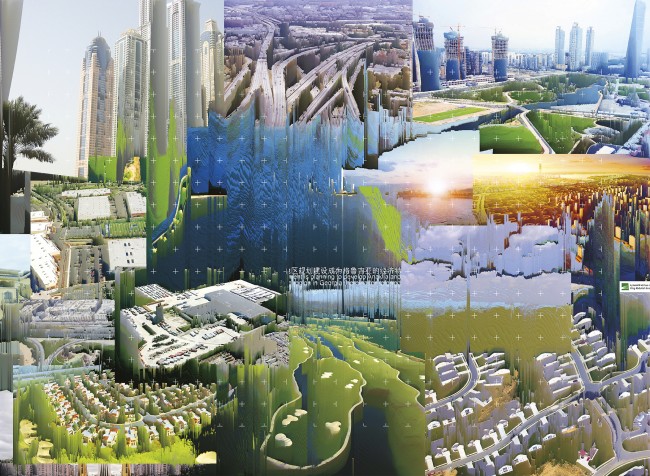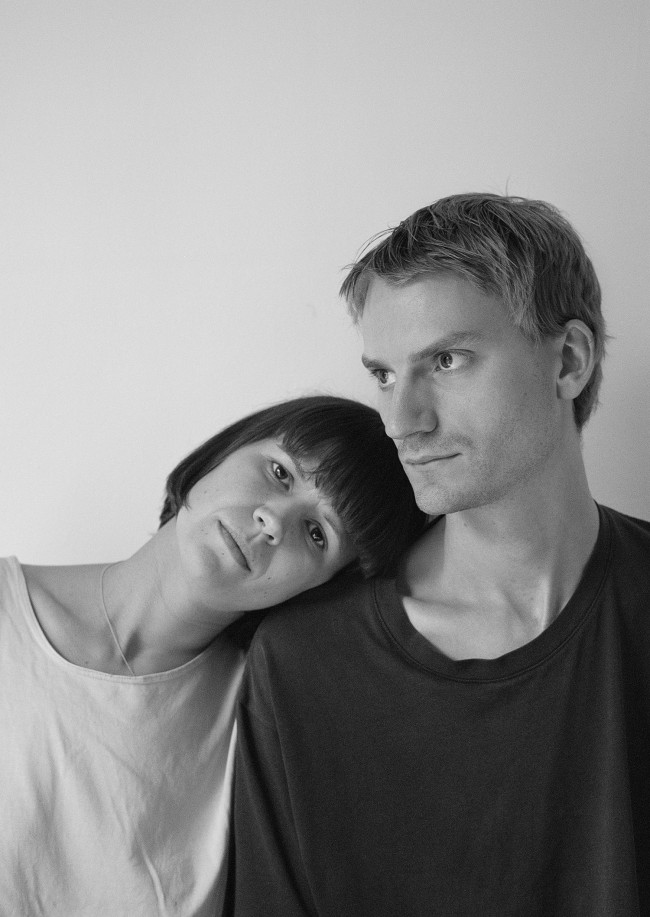UNCANNY VALLEY: CONSIDERING LATE-CAPITALIST TECH AESTHETICS
This is a story of three theories. The first comes from the world of robotics and computer graphics, as conceptualized by Japanese roboticist Masahiro Mori. The second is about the threshold of computational power and the level of definition of post-Fordist methods of production and consumption. The third is the philosophical theory of accelerationism in the context of cultural practices of art, design, and politics. Taken together, they form a new aesthetic strategy for representing architectural interiors in the 21st century: the strategy of the “uncanny valley.”
As a theory, the “uncanny valley” was first published by Mori in 1970. He proposed that, when humans are confronted with something that behaves like another human but is not quite human, we’re repulsed and our emotional-response curve dips into negative territory — the “valley” part comes from this dip. Think Japanese sex-doll robots, artificial limbs, and CGI Disney movies. It’s significant for this discussion that these are aesthetic qualities normally attributed to something unique and singular, something with a personality. When these aesthetic qualities are grafted onto something mechanical, that’s produced in multiples and is almost “virtual,” they produce visceral emotional reactions.
Not everybody feels the same way. At either extreme of this real-virtual spectrum there are those who are vehemently anti-technological (Luddites), and those who wish they themselves were one of the robots. In music, this post-human impulse can be seen with groups like Kraftwerk or Daft Punk, while in design Dieter Rams or Patrik Schumacher come to mind. This back and forth between human and robot, real and virtual, and even interior and exterior, has considerable conceptual overlap with techniques of architectural representation, especially in the digital age. For what is constructing architecture, if not a form of constructing ourselves?
Next comes the theory of increasing computational power: the post-Fordist computational threshold. In the 20th-century Fordist economic model, mass-produced interchangeable parts created completely new social and political relationships, from the consumption of goods, to systems of governance and political representation. The design problem for this age was essentially: how do you make an object an infinite amount of times? Post-Fordist models took this question a step further by asking: how do you make the same thing infinitely many times, yet every time slightly different and customized? This possibility could only be conceptualized thanks to Moore’s Law and the increasing power of computation, which allows us to model our world in ever more precise ways. Throughout the 1980s and 90s, this theory of mass customization seemed like the future of everything, theorized in the architectural avant-garde by the likes of Sanford Kwinter and Manuel De Landa. We’ve been promised, for the past ten years or so, that a 3D-printing revolution will deliver all sorts of custom-designed goods; we may still be waiting for that instantly downloadable parametric cutlery, but it’s the possibility that counts.
While it may not yet be feasible to do this with physical things, we are able to do this virtually, with a piece of software or a digital image, and this is where the complicated real-virtual, object-simulacra relationship becomes interesting. For the first time, increases in computational power allow us to visualize virtual spaces which exist in infinitely many variations and copies, each slightly different to the other, and rendered with breathtaking photorealistic accuracy. We’ve crossed a threshold where images of our real spaces and our virtual spaces are virtually indistinguishable, creating a spectrum of varying degrees of realness. In Foucauldian fashion, we could call this the “reality function:” the gap between standing in an actual commercial kitchen showroom versus standing in front of a kitchen showroom rendered on a green screen is increasingly disappearing.
Today’s technology allows us to create virtual spaces that function as the spatial doppelgängers of real spaces, which is where we might encounter the uncanny-valley phenomenon in architectural interiors. Just as the robot is a copy of a human, the render is a copy of a space. We are surely in the infancy of what kinds of virtual-doppelgänger spaces will be created, whether in Second Life, in video games like Minecraft, or in commercial renderings of luxury real estate. With regard to the latter use, the value of this new type of computationally constructed image transcends its representational value as something used to illustrate a not-yet existing space, and begins to obtain forms of exchange value, becoming a type of currency — just as coins or bills have no intrinsic value but symbolize exchange value, so these images represent the exchange value of luxury real estate. It is important to note that the same Monte Carlo algorithms used to model the way light bounces off surfaces are used to calculate financial probabilities of risk and return: they are both in the business of predicting potential near-futures.
With the connections between the computational construction of possible near futures established — whether spatial or financial — let us consider the third theory: that the neoliberal stage of late-capitalism cannot be overcome by resistance, but by accelerating it until it self-destructs. Popularized by Alex Williams and Nick Srnicek in the 2013 manifesto #ACCELERATE, the theory of Accelerationism proposes that “the most important division in today’s left is between those that hold to a folk politics of localism, direct action, and relentless horizontalism, and those that outline an Accelerationist politics at ease with a modernity of abstraction, complexity, globality, and technology.” No area in architecture and design is more ripe for consideration through this lens than that of the luxury real-estate rendering, which aims to capture the flow of global capital through the projection and distribution of not-yet-built spaces that engender envy, desire, and investment.
Luxury real-estate renders, Trulia listings, and even some Airbnb apartment listings are translations of aesthetics into economics. Their aesthetics represent the acceleration of the quantified image, an image as a form of currency with exchange value that reflect the wants of capital in the 21st century. Which leads us to the way that uncanny-valley domesticity functions within the realm of the rendered image. There is a tangible but almost subconscious difference between the uncanny-valley rendered image and the luxury-condo render. The uncanny strategy uses the same tactics while at the same time offering an alternative to what luxury-condo images imply — not an escape from perpetual cycle of booms and busts, but at least a different path to enjoy.
An eerily predictive example of the uncanny-valley phenomenon in interior design was the control room of Project Cybersyn. Commissioned in 1971 by Salvador Allende’s Marxist Chilean government from British cybernetician Stafford Beer, Cybersyn was a computer model of Chile’s economy which arguably represented an early attempt to “preserve the gains of late capitalism while going further than its value system, governance structures, and mass pathologies (would) allow,” as Williams and Srnicek described Accelerationism in their manifesto. Cybersyn’s control room was the work of German interface designer Gui Bonsiepe, and had a very uncanny Gesamtkunstwerk quality to its design — perhaps because of its 1970s futurism, or perhaps because the future was to be directed from a central control room in which every aspect of society was quantified, recorded, and graphically presented on wall screens so as to be theoretically optimized for a seamless socialist economy. As disseminated in photographs that were entirely devoid of any human presence, the furnishings — orange carpet, white-fiberglass swivel chairs with remote-control armrests, walls of screens — are a kind of 20th-century precursor to the 21st-century uncanny-valley phenomenon, a primitive form of abstraction and computerization as manifested in a designed interior. As an iPad-displayed aphorism at Shawn Maximo and Justin Simon’s Paloma Powers Boardroom Presentation at 2014’s Art Basel Hong Kong put it, “When every surface becomes a screen, what do you want to stare back at you?” Cybersyn can be viewed as an optimistic example of what a politically motivated, computationally deterministic interior design can aspire to be as it constructs and projects alternative futures.
An Accelerationist aesthetic project distinguishes itself from traditional attempts at alternatives in that the latter “remain content with establishing small and temporary spaces of non-capitalist social relations, eschewing the real problems entailed in facing foes which are intrinsically non-local, abstract, and rooted deep in our everyday infrastructure. The failure of such politics has been built-in from the very beginning” (Williams and Srnicek). This is where our uncanny-valley renders fit in: they accept the aesthetic that has emerged to capture global capital, but they go beyond its fundamentally conservative ideology, strategically injecting the uncanny to render legible the quality of quantity — and having some fun along the way.
So what does this uncanny look like? How can we recognize it? What are some examples of the uncanny-valley aesthetic in 21st-century domestic space? Rather than a specific aesthetic, the uncanny valley is more of a strategy, characterized by a workflow, or an approach, which accepts the new vernacular of the late-capitalist residential interior, but does so in a way that is slightly “off.” It might be an uneasy feeling, where a kind of perverse joy wells up inside the observer, an indescribable new sensation. An IRL version of this feeling can be experienced in the spatial installations of artist duo Justin Lowe and Jonah Freeman, such as Stray Light Grey (2012), while author Tom McCarthy described it in his 2006 first-person novel Remainder when the protagonist — who, because he’s lost his memory, spends his time creating ever-more-elaborate retroactive simulacra of pseudo events in his past — says, “I felt myself becoming weightless for an instant, a sensation of being held just above something.”
Digital renders of spaces that don’t or can’t exist have even more potential to generate these sensations. Artist and architect Shawn Maximo employed the strategy in his design for the offices of Paloma Powers (2014), while artist Takeshi Murata generates a similar anxiety that is at once uncanny and deeply familiar — or perhaps it’s uncanny because it’s deeply familiar. In these “un-real” spaces, we might see an all-metal palm tree, or a Greek statue normally made of veiny marble rendered in clear water: the usual correlation between a form and its expected surface texture is undermined. All these images of the uncanny share certain affinities: space is represented perspectivally and light is reflected indirectly, thanks to the subtleties of expensive computational indirect illumination caused by an unnaturally high number of light bounces. It’s a visual strategy perfectly in keeping with Accelerationist politics, “employ(ed) less as a drive toward meltdown than a cunning practice through which to capture and redeploy existing energies and platforms in the service of a re-universalized left politics,” in the words of curator and art critic Gean Moreno. Identifying this subtle, unexpected aesthetic that channels political will into a visible image-form — recognizable, believable even — suggests a playfully subversive approach in our late-capitalist world, and perhaps the beginning of imagining a different imminent present. What if the luxury-condo marketing campaigns of the future were more Takeshi Murata or Paloma Powers than Related Real Estate or Kohn Pedersen Fox? Who would comprehend and appreciate them? And who would invest?
Taken from PIN–UP 19, Fall Winter 2015/16.

